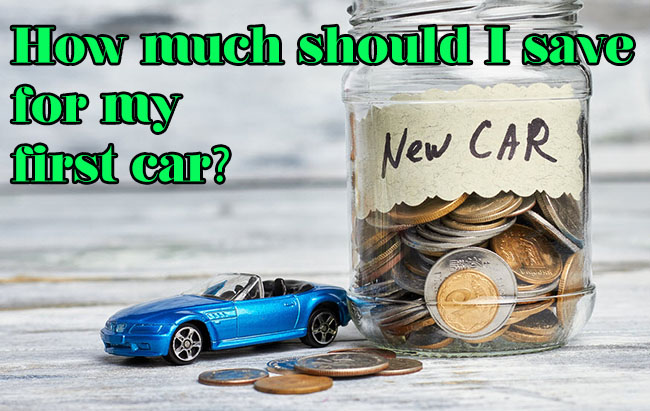Getting a first car is really exciting. But almost as soon as the thought comes up, other questions begin to surface like, “How much should I save for my first car?”
And if that’s the question that’s been nagging at you, have no fear – because we’re going to answer exactly that in this article.
Article Topics Covered:
How Much Should I Save For My First Car?
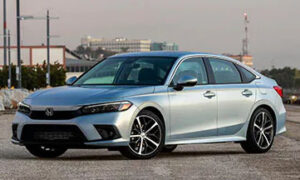 When it comes to saving up for your first car, there are a lot of things to consider. How much can you afford each month? What’s the down payment? Are you going to buy new or used?
When it comes to saving up for your first car, there are a lot of things to consider. How much can you afford each month? What’s the down payment? Are you going to buy new or used?
The main thing comes down to how much you’re able to save, and you can calculate what you can afford based off your monthly income.
The other way is to choose a certain dollar amount that you’d like to spend. If you’re looking for a used car, figure on spending between $7,000 – $10,000 to get a reliable one.
One thing is for sure: cars are expensive. Depending on the make and model, the price tag can be more than a year’s worth of salary. And that’s not even counting things like gas, insurance and repairs.
And it’s expensive, even if you aren’t buying an expensive car like a Tesla.
But don’t worry! This post is intended only as a guide on what you should know before buying your first car. So sit back, relax and read on.
Saving For Your First Car: Two Money Rules To Follow
Is There a One-Size-Fits-All Rule
There is no one-size-fits-all rule when it comes to saving money for a car.
However, there are a few general tips that can help you out:
Start saving 35% of your income to help you get a car quickly when you’re starting out.
Saving 35% is perfect for those who need a car but don’t want their debt payments to take up more than around one-third of their annual salary.
There’s also the 1/10th rule where your monthly loan payments shouldn’t take up more than 10% of your net monthly income.
This rule might work well if you have other life costs (like a mortgage and student loans) that are taking up most of your paycheck each month.
The Frugal Rule
When you’re trying to save money, you want to be frugal and buy a used car as it’s tough to buy new ones through dealerships. You can get a lot more car for your money if you purchase a used vehicle. In addition, when you buy used, you’re not only saving money on the car itself but also on insurance and other related costs.
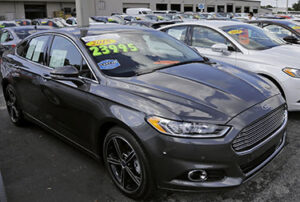
Can I Finance My First Car with a Dealership?
If you’re looking for a new car, and don’t have the money saved up to pay for it outright, you may be wondering if you can finance your first car through a dealership. The answer is yes, but there are some things you should know before signing on the dotted line.
First of all, dealerships will work with you to figure out how much you qualify for based on your credit score. They want to make sure they’re giving people loans they can afford to pay back.
Next, make sure you understand how much car you can actually afford. Don’t sign up for a deal that’s going to put you in over your head financially. You’ll need to come up with a down payment as well, and that’s usually around 10% of the purchase price.
Once you’ve signed the contract and paid your deposit, be prepared to wait awhile before driving off in your new car. It usually takes a few days or weeks for everything to go through processing and finalize the loan agreement.
One thing to keep in mind is that salespeople are less likely to take advantage of someone who is accompanied by an adult friend or family member. So if possible, bring someone along when buying your first car!
1. Calculate your down payment
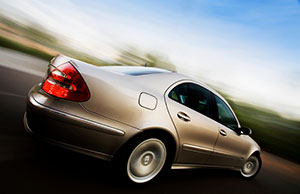 When you’re buying a car, one of the most important things to figure out is how much money you’ll need for your down payment. This will determine what kind of deal you can get on the car itself. The more money you put down, the better your deal will be – aim to spend around 20% on a new car and 10% on a used car.
When you’re buying a car, one of the most important things to figure out is how much money you’ll need for your down payment. This will determine what kind of deal you can get on the car itself. The more money you put down, the better your deal will be – aim to spend around 20% on a new car and 10% on a used car.
To calculate your down payment, start by determining the total cost of your car (including sales tax). Once you have that number, subtract the amount you want to finance from it. That’s how much money you’ll need for your down payment. Keep in mind that some lenders require a minimum down payment, so make sure to shop around for financing before making any decisions.
You may be able to save even more by shopping for a loan from an online lender first. These lenders often offer lower interest rates and fees than traditional banks do.
When you’re budgeting for a car, it’s important to remember all the associated expenses. There’s not just the purchase price of the car to think about! You’ll need to budget for things like insurance, registration, and repairs.
It can be tough to save up enough money for a car on your own. That’s why many people turn to financing options like bank loans or credit cards. But this can lead to problems if you’re not careful. You might end up spending more on interest payments than you would have if you’d just saved up for the car yourself.
One way to avoid this is by automating your savings. This means setting up rules that will automatically move money from your checking account into a savings account whenever you reach a certain limit. This way, you won’t have to worry about accidentally spending too much and going into debt.
There are lots of different ways to automate your savings. You can use a bank account that has special rules for saving money, or sign up for an app that will help manage your budget and suggest ways to save efficiently . Whatever method you choose, make sure it fits in with your overall financial plan so that buying a car doesn’t put too much stress on your budget.
3. Limit unnecessary spending
It’s no secret that cars are expensive. In fact, the average cost of a new car is over $35,000. If you’re like most people, you’ll need to save up for a while before you can buy your dream car. But it’s not impossible—you just need to be smart about it.
One way to save money is by cutting down on “want” spending temporarily. This might mean cancelling your cable subscription or eating out less often. You can also find ways to reduce your current expenses, such as by choosing a cheaper grocery store or getting rid of unnecessary subscriptions.
Another great way to save money is by setting up automatic savings for car costs. This will help make sure you don’t miss the most important purchase of your life!
The article also includes data on how much people typically spend during the process. So if you’re looking for some guidance, this is a great place to start! Finally, if you’re willing to put in a little extra effort, there are plenty of ways to save money on your car purchase. Side hustles are a great way to do this, and you might be surprised at how much you can save by borrowing your down payment.
Instead of borrowing the money you need, focus on saving and investing it. This will help make your car purchase more affordable in the long run.
A great side hustle that you can start once you’ve got your car is to be a delivery driver for Doordash.
4. Set up a savings account
When you’re trying to save up for a car, the best way to do it is to set up a savings account. This will keep you from dipping into your car savings for other purposes. You can open a separate account if you have a few years to save up, or put it in a high-interest certificate of deposit or savings account so it can grow.
If you’re looking for ways to save money on cars, one of the best things you can do is automate your payments. That way, you’ll be less likely to spend money on unnecessary things. Another great way to reduce spending is by cutting back on luxuries like eating out and cable TV.
Saving for a car doesn’t have to be hard – in fact, following these simple steps can make the process much easier. Automating your payments is one of the easiest ways to make sure that you stay on track, and saving all or most of your down payment minimizes the amount you have to borrow. Just remember: it requires discipline, but if you follow these steps, you could save thousands in interest and be more prepared at the dealership!
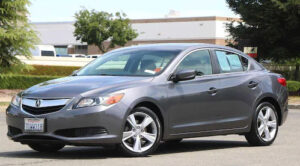
5. Automate your savings
Saving money can be difficult, but it’s important to do in order to have a cushion in case of an emergency. One way to make saving easier is to automate your finances by setting up a budget and transferring money into savings on a regular basis. This way, you won’t have to worry about forgetting to save or overspending on unnecessary items.
There are several ways that you can automate your savings. One option is to use automatic transfers from your checking account into a savings account. This will help ensure that the money you need for emergencies is set aside each month without having to remember to do it yourself. Another option is to invest in a mutual fund or other type of investment vehicle that will automatically deduct money from your bank account each month.
6. Sell or trade your current car
If you are still underwater on your car loan, or if you no longer need your current vehicle, there are a few things you can do to sell or trade it in. You can either sell it to a private party, trade it in at a dealership, or have it inspected to determine its value.
When selling a car privately, be sure to advertise it well and set up an appointment for potential buyers to test-drive the vehicle. It is also important to have the title of the car in hand so that there is no confusion about who owns the vehicle.
When trading in a car at a dealership, be sure to get an estimate of its value before going through with the transaction. This way, you will know what kind of deal you are getting and will be able to negotiate if needed.
If having an inspector look at your car is more your style, there are many companies that offer this service. They will give you an estimate of how much your car is worth and whether or not any repairs need to be made before attempting to sell it.
7. Pick up a side hustle
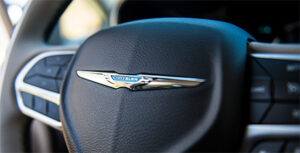 One of the quickest ways that you can start to add more cash to your new car fund is to get another job or start a side hustle.
One of the quickest ways that you can start to add more cash to your new car fund is to get another job or start a side hustle.
This largely comes down to being a little creative and thinking outside the box.
You could offer yard maintenance services to your neighbors, offer to walk people’s dogs or find local products that you can sell online – whatever comes to mind that you might be able to make a buck on.
Of course, once you have your new car you will have a lot more opportunities to generate additional income.
Before You Apply for a Loan: Know Your Credit Score
Credit scores are a numerical representation of your credit history and current credit status.
Your credit score is important because it helps lenders decide whether to give you a loan and what interest rate to charge you.
You can get your free credit score from many sources, such as AnnualCreditReport.com or CreditKarma.com
A good way to improve your credit score is to make sure that you always pay your bills on time.
Your credit score is a number that reflects how well you’ve managed debt in the past. It’s important because it helps lenders decide whether to give you a loan and at what interest rate. To improve your credit score, make sure that you always pay your bills on time – this is one of the biggest factors that influence your rating
Tools & Tips To Pay Off Debt
If you’re looking for ways to pay off your debt, you’re in the right place. In this article, we’ll discuss some of the best tools and tips for rapid debt payoff.
First, let’s take a look at some of the challenges that developers face when it comes to owing money. The competitive marketplace creates a lot of pressure for on-time delivery. They must cater to production-ready code management and new capability implementation. Release cycle is long, so the development team makes several assumptions before application deployment – in such a scenario, it takes more time to resolve issues during deployment in the production or staging environment.
All of these factors can make it difficult to get ahead financially. However, there are strategies that can help speed up the process of paying off your debt. For example:
- Use a Debt Reduction Calculator: This tool allows you to subtract all costs from your income, which should be less than what you owe on your car loan.
- Save Money Before Applying For A Loan: If you can afford a new car, save for it first so that you don’t end up borrowing more than what you’re able to pay back.
- Establish A Budget: It is important to calculate your monthly expenses and variable costs before applying for a loan.
- Pick Up A Side Hustle: Consider car rentals if you’re looking for a side hustle. Car rentals are a good strategy if you want to avoid overextending yourself financially or getting into debt when buying your first vehicle.
Costs of buying your first car
Purchase price
When you are buying your first car, it is important to consider the purchase price. You can find good deals on used cars, but make sure to compare new vs used cars to find out which one is best for your budget and needs. New cars typically have more advanced safety features, but they also come with a higher price tag. Used cars may not have all of the latest bells and whistles, but they do offer superior fuel economy and low initial maintenance costs. In many states, inspection requirements do not initially apply when you buy a used car, making the process simpler and easier.
Insurance
When you buy a new car, you’ll need to purchase insurance. The cost of insurance varies depending on the make and model of your car, as well as your personal details. You can find more information about insurance in another guide.
A quick search online will give you a list of difference insurance options.
Fuel
When you’re buying your first car, it’s important to think about the costs of fuel. You can save a lot by selecting a more fuel-efficient model.
You should also use an Internet mapping service to make sure you’re driving on roads where the car handles well. The salesperson should know about your plans so they can help you have a great experience when you test drive your new ride! Test the car’s performance before buying – don’t do anything illegal or make sudden maneuvers on test drive, so you know what to expect when driving in traffic. Check your mirrors and blind spots before driving. Check the wheel alignment during a test drive as well. Test for fuel efficiency by noting what the odometer and fuel gauge say at the beginning and end of your drive. Buying a new car includes many other costs, such as repair and maintenance. The salesperson should be treated as a resource who knows the features of the car well, so they can help demonstrate them when you are on your test drive. It can be helpful to ask a salesperson take the wheel so you can have time to look over the car without them distracting you.
Maintenance
Regular car maintenance is important to keep your vehicle running smoothly. Some of the expenses you can expect include:
- Oil changes
- Tires
- Routine fixes
When wondering how much should I save for my first car, people also frequently asked these questions:
How much should i save for my first used car?
How much you should save for your first used car depends on a number of factors, including the type of car you want, your budget and where you live. If you’re looking for a cheap used car, you can probably get away with saving $1,000 or less. But if you’re looking for a nicer used car, you’ll likely need to save more – $3,000 to $5,000 is not uncommon.
Of course, the amount you ultimately need to save will also depend on whether you plan to finance your used car purchase or pay cash. If you plan to finance, most lenders will require a down payment of 10% to 20% of the loan amount.
How much should you spend on a first car for a teenager?
How much you spend on a first car for your teenager really depends on your budget and what kind of car you’re looking for. Regardless, you’ll want to make sure it’s a safe investment – nothing too flashy or expensive that could garner unnecessary attention. You also don’t want to get something that’s too old or in bad condition, as it likely won’t last very long and could pose safety risks. Ultimately, it’s up to you to decide how much to spend on a first car for your teenager, but consider all of these factors before making a decision.
What should my first car be?
Your first car should be something that you can afford and that is reliable. You don’t want to spend your hard-earned money on a car that is going to give you trouble down the road. A used car is a good option for your first car, as long as you do your research and buy from a reputable dealer. Another thing to keep in mind when choosing your first car is what kind of driving you’ll be doing. If you plan on doing a lot of city driving, then a smaller car might be a good option for you. On the other hand, if you need a car for highway driving, then you might want something with more power and better gas mileage.Whatever you decide, make sure that your first car is something reliable & that you can afford.
How much did the first car cost in 1886?
The first car in 1886 cost $850. Adjusted for inflation, that would be about $23,000 in today’s dollars. This price was for a three-wheeled vehicle called the Duryea.
Why your first car should be cheap
Your first car should be cheap for a variety of reasons. First, it will be less expensive to maintain and operate. Second, it will be easier to sell when you’re ready to upgrade. Third – and finally – a less expensive car is also likely to have lower insurance rates. All of these factors make a cheap car the best option for your first vehicle.
What should my first car be?
There isn’t a one-size-fits-all answer to this question, as the best car for a new driver depends on that person’s individual needs and preferences. However, some factors to consider when choosing your first car include budget, driving experience, and the type of terrain you’ll be driving on.
If you’re on a tight budget, a smaller, less expensive car might be the best option. If you’re a beginner driver, you might want to choose a car with good safety features. Also try to get a car that is very fuel efficient, especially as the price of fuel is increasing.

